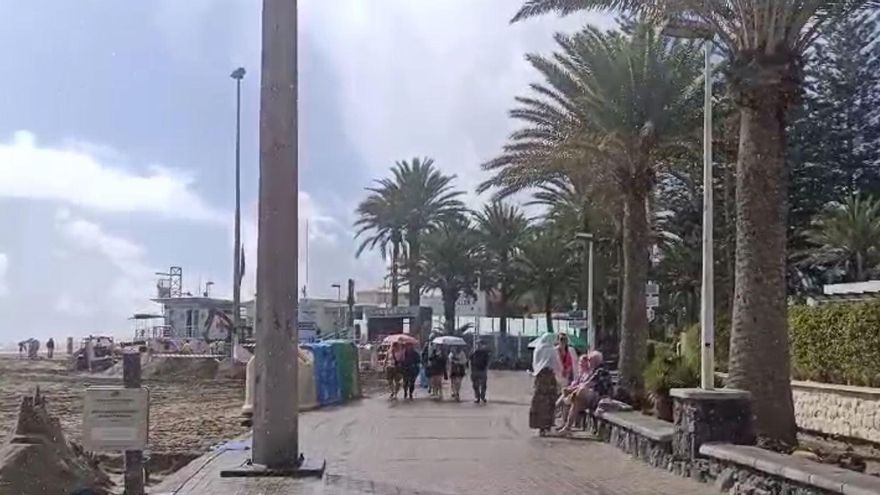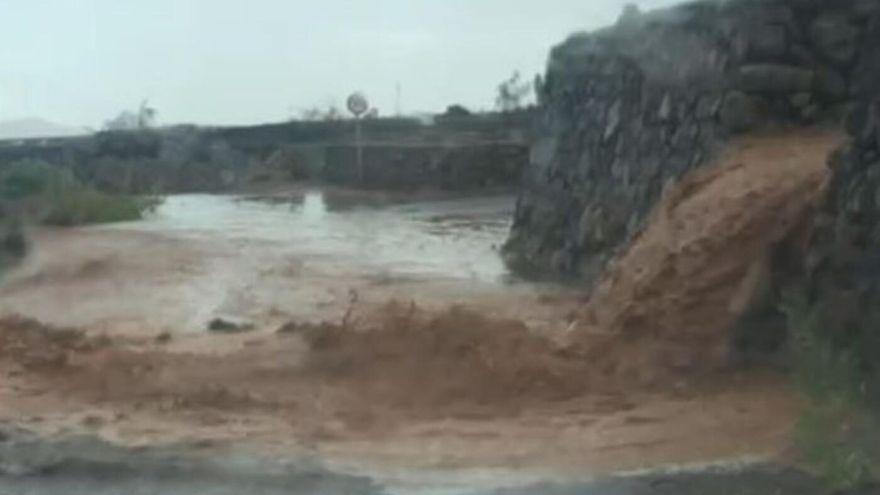The Herreño legend of Garoe, the tree that bestows prosperity in the form of water upon its inhabitants, came to fruition this past Wednesday. However, it was not the storm known as the sacred linden, which bears a name symbolic of the Canary Islands, that was responsible. The credit instead goes to a Dana that had been “taken off the hook” and strategically positioned near the Canary Islands to benefit from the storm’s weakening, resulting in heavy downpours on the Archipelago, accompanied by more than 800 lightning strikes, sharp temperature drops, and even a light snowfall on Teide.
In spite of the forecasts – and even pre-alerts – regarding a storm throughout the Archipelago, the skies greeted Wednesday with extensive clearings and a strong Sun that seemed determined to maintain its brilliance. The State Meteorological Agency (Aemet) had anticipated that rainfall would commence during the morning. And it did, but only on the island of La Palma, where early morning saw rain accumulations of over 30 litres per square metre in certain areas, such as the summit or the municipality of El Paso. Notably, within just one hour, the area recorded 10.2 litres per square metre, marking it as one of the wettest regions across the entire Canary Islands.

Adzubenam Villullas
The Dana moved throughout the morning to the remaining islands, accompanied by a dense cover of dark clouds which indicated an imminent weather change. In Tenerife, heavy rainfall commenced around midday, catching many residents and visitors off guard. With particularly intense showers at certain times, rainfall totals surged beyond 25 litres per square metre within a few hours. Consequently, the northern regions of Tenerife experienced some of the highest rainfall, with La Victoria de Acentejo recording 26.4 litres per square metre and San Juan de La Rambla reaching 20.4 litres per square metre.
The First Flakes of the Year
In the summits of Tenerife, the low temperatures and precipitation resulted in the first snowflakes of the year. While the slopes of Teide had already donned a white dress earlier this winter due to Christmas snowfall, this Dana has rejuvenated its glamorous attire.
With the cold dana clouds around the Teide National Park, the temperature at the summit dipped to approximately 0.3 degrees by 1:50 p.m. A light precipitation of merely 2.4 litres per square metre was sufficient to accompany a rapid temperature drop (which fell 4 degrees in just one hour) alongside a light snowfall.
The summits of Tenerife were not the only areas to witness notable drops in temperature. At Roque de Los Muchachos on La Palma, the minimum recorded at 4:00 p.m. was 1.3 degrees, while at the Vega de San Mateo on Gran Canaria, temperatures remained below 10 degrees throughout the day.

The Province
The storm was further accompanied by an intense electrical display audible throughout the morning. In total, over 800 lightning strikes were recorded in the vicinity of the Canary Islands during the day, with peak activity observed between 11:00 and 16:00.
The wind also made its presence known. Despite its relatively gentle force on the coast or in the midlands, gusts reached up to 89 kilometres per hour, with sustained winds of up to 77 kilometres per hour.
Forecast for Thursday
The rainfall and cold are expected to prevail on Thursday across the more elevated islands. The State Meteorological Agency (Aemet) does not rule out the possibility of locally heavy showers in the northern parts of La Palma during the early part of the day, which might be continuous and potentially bring hail. Aemet has issued a yellow warning for rain and coastal conditions on La Palma during the morning, while storm warnings have been deactivated for the remaining islands.

Laura de Pablo
In both the La Palma summit and Tenerife, showers may turn into snow. Temperatures are set to continue their downward trend, particularly in the northeast of Gran Canaria and the eastern coasts of the other eastern islands.
Looking towards the weekend, Aemet anticipates that the Canary Islands will experience a phase of stability, although significant gaps are not expected just yet, and some isolated showers may still occur.
















